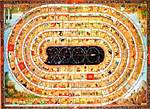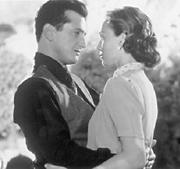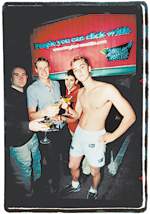It started on a rainy Saturday afternoon last November, when my boyfriend and I found ourselves driving around in search of an adult-sized jigsaw puzzle. Novice puzzlers, we started at a K-Mart—only to find 50-piece puzzles with pictures of Care Bears and Jedi Knights. This wasn’t what we had in mind. At an upscale toy shop store clerks tried to entice us with 3-D puzzles, but we weren’t buying it. There’s something about hunching over a flat surface for hours on end, obsessing about that one piece that can’t be replicated. (Three-dimensional puzzles, the newest puzzle fad, are made of paper-lined foam: They remind me too much of a model of the Empire State Building that my childhood cat ended up using as a scratching post.) Finally, we arrived at Magic Mouse Toys in Pioneer Square (603 First, 682-5007) and shelled out $60 for a 5,000-piece jigsaw puzzle that featured a photograph of Venetian gondolas. Some of the best puzzles in Seattle can be found at Magic Mouse Toys. The store features some beautiful Ravensberger puzzles, like a 9,000-piece replica of Brueghel’s Tower of Babel ($100).
Even with the help of a friend, it took us several hours just to spread and flip the pieces. The result was a staggering, visual patchwork that covered the entire surface of our table. Thankfully, we knew the first two rules of puzzling—start with the edges and work around large “anchor” objects—and we were up to the challenge. To make room, we transported about a third of the pieces onto two satellite tables. Alas, we never did finish: It proved to be too great a challenge. The puzzle assumed an identity of its own; its presence filled the house, silently mocking us for our lack of discipline. “Arrgh, the puzzle,” we’d mutter to ourselves, catching glimpses of it on our way past the dining room table. We knew the puzzle had beaten us.
Jigsaw puzzles first hit the scene in the US in the early 20th century, but it wasn’t until the 1930s that their popularity really took off. Parker Brothers, the game manufacturer, produced a line of wooden “Pastime Puzzles” that became so popular the factory ceased to make other games. In the ’30s the introduction of die-cut cardboard made jigsaw puzzles affordable to the masses. Today greenboard, a top-grade cardboard, is used for higher-end puzzles.
A wide variety of puzzles is available on the market, ranging in price, quality, and now, dimension: 3-D puzzles, the latest in puzzle innovation, add a new “level” of intensity to the puzzling process. There are some of us, however, who remain loyal to the old-fashioned medium—and our numbers are growing, in fact. According to Pam in Magic Mouse’s puzzle department, the 2,000-plus-piece, adult-themed puzzles (“adult” meaning fine arts pictures or landscape photographs, as opposed to kittens and bunnies) have been gaining popularity with the urban professional set—particularly “stressed- out male attorneys”—in the last three years.
As gifts, jigsaw puzzles score on a number of points. First, they’re cheaper than a digital camera, a Palm Pilot, or, for that matter, any consumer electronics (except maybe a clock radio). Second, even if the recipient owns a puzzle already, you can pretty much bet that s/he doesn’t have all the pieces, and that s/he has no plans to do that puzzle ever again. (Puzzles are like romantic conquests: Once you’re through, you’re through.) Third, the person you’re getting the puzzle for probably hasn’t done one for at least a decade. Fourth, they’re great for parties. Yes, it sounds dweeby, but if you have any nerd/tech friends (like I do), they will swoop down like birds of prey and spend the night nibbling on the puzzle’s carcass to avoid schmoozing. Fifth, if you really like the person, you can offer to help with the puzzle. Long nights spent interlocking cardboard can be very romantic. Pop open a bottle of Merlot, hold up two pieces, and say, “We fit together like this end piece and this three-pegged center piece.”
Games and Gizmos (200 Broadway E, 322-6585; 211 Bellevue Wy NE, Bellevue, 425-462-1569 ; 8912 161st NE, Redmond, 425-895-9588) offers a good selection of both jigsaw puzzles and 3-D puzzles. The latter are quite popular here, and if you stop in be sure to check out the freestanding R2-D2 that speaks (it has a small recorder built in). Standing two feet tall, it goes for $39.99. Movie merchandise seems to be hot in the 3-D market (one more reason to rediscover jigsaws, since at least you’re not laboring for hours on what amounts to a marketing scheme). The store’s best-selling 3-D puzzle is a 398-piece replica of the “Titanic,” which goes for $24.95.
Another great gift idea is to customize your puzzle. Just send in a photo to be imprinted on a puzzle: www.phuzzles.com will produce a 308-piece custom puzzle for a mere $24.95; www.jigsawpuzzle.com is more expensive, charging $60 for a 320-piece puzzle. At www.mgcpuzzles.com, which offers handcrafted wooden puzzles, you may also choose from a variety of cuts, from traditionally shaped pieces to the “nightmare” style—amoebalike shapes with curly appendages. This last category offers the ultimate challenge, but it’s not cheap: A 1,500-piece puzzle in the nightmare cut will run you a hefty $2,025.
The Internet is also an excellent place to find a huge variety of adult puzzles for sale. The site www.jigsawjungle offers hundreds of high-quality puzzles with up to as many as 12,000 pieces. Surfer beware: These are not your standard flowers and simple landscapes. Some of these puzzles have extremely intricate designs created especially to drive you mad when you stare too long at the pattern. My favorite: the “Millennium” puzzle by Heye, an 8,000-piece depiction of every decade in the last 2,000 years ($149.95). I think it could be my chance for a cardboard comeback. But it might be more fun to unleash this baby on close friends or family members. After all, it’s totally Y2K compliant, and just think—if the world does come to a crashing halt, they’ll have plenty of free time.
Orianda Guilfoyle is a freelance writer in Seattle.








